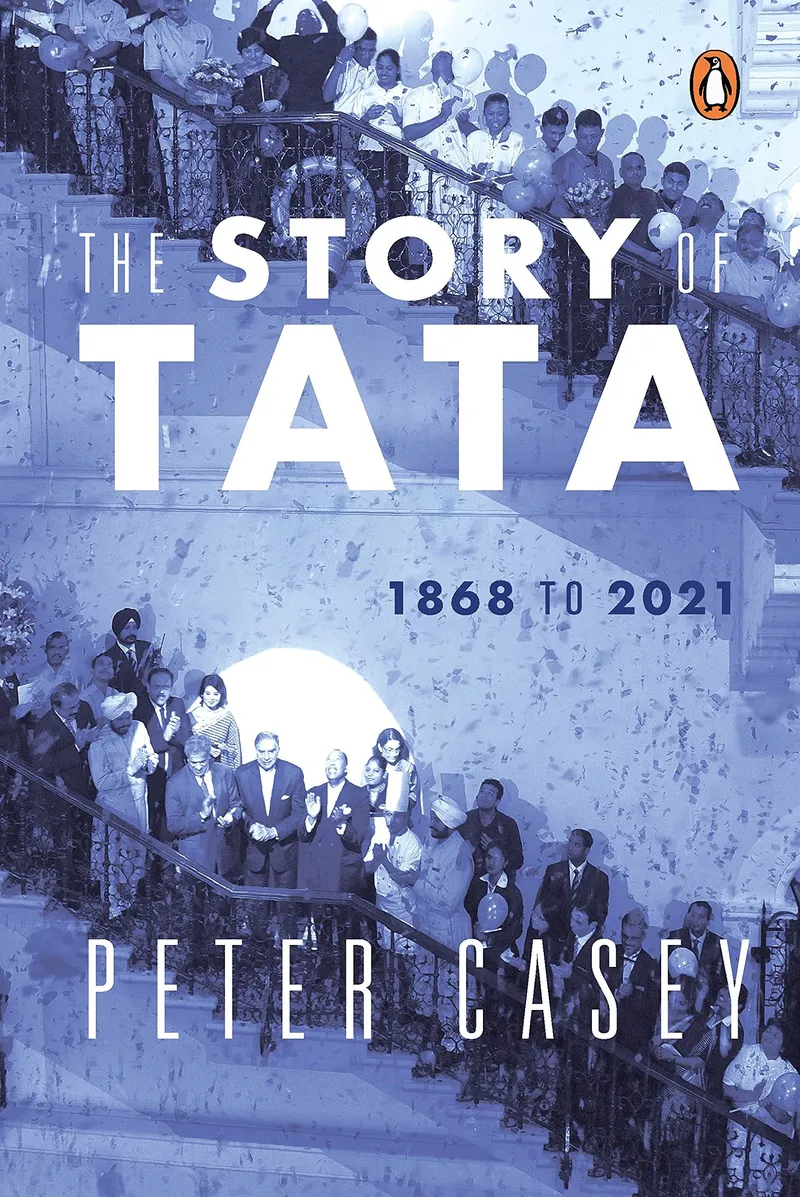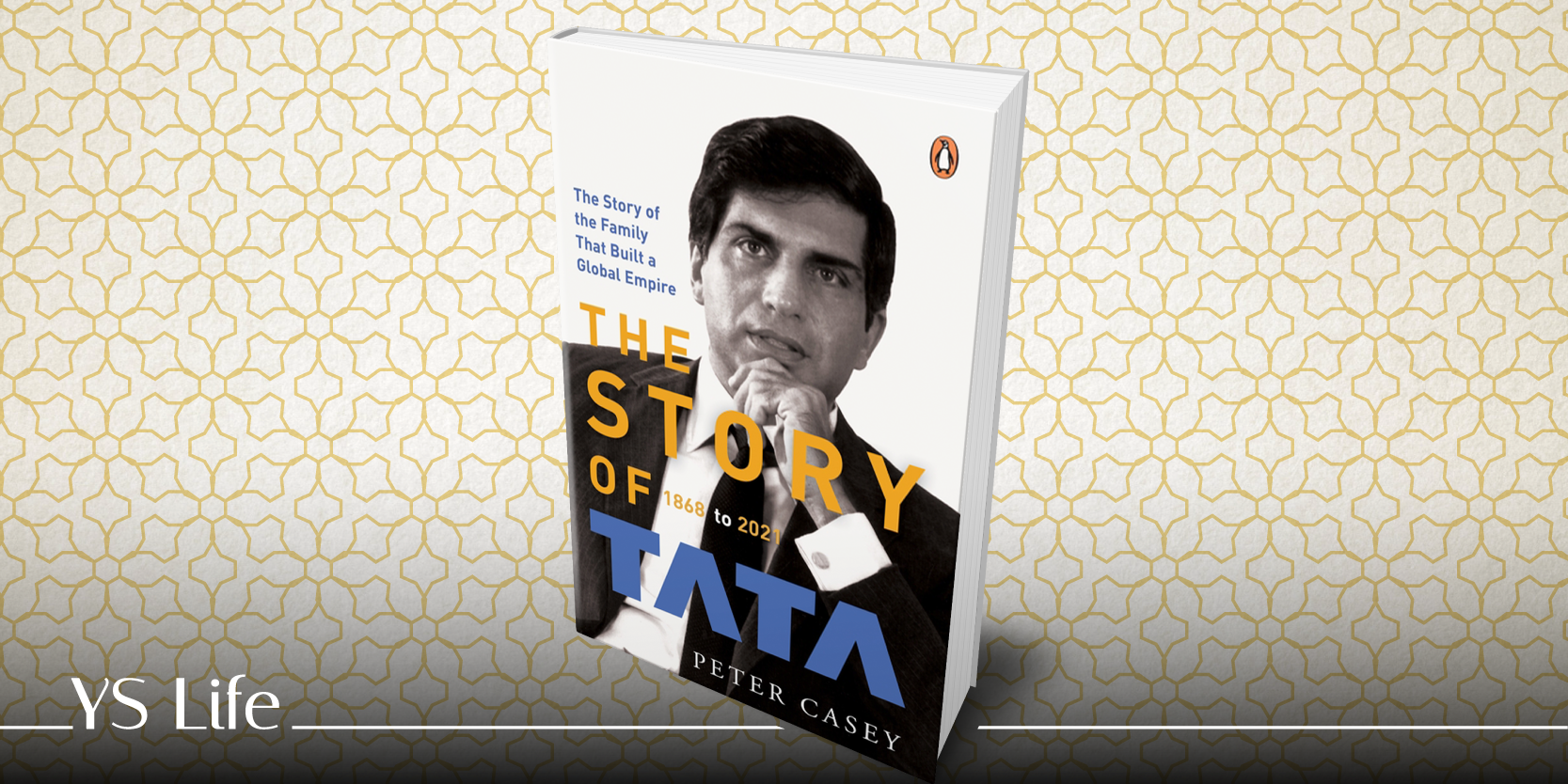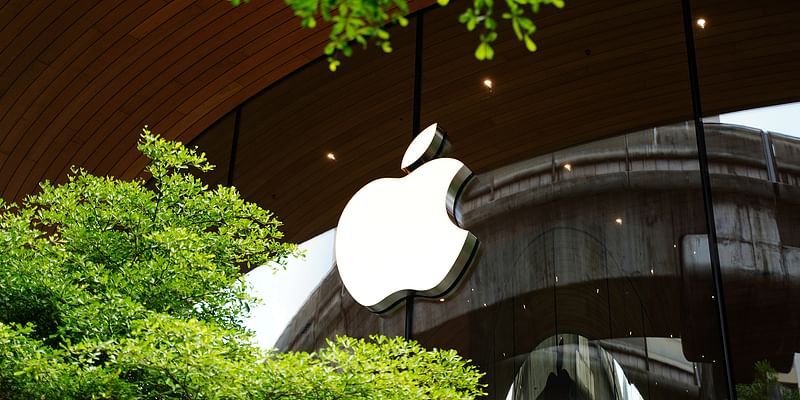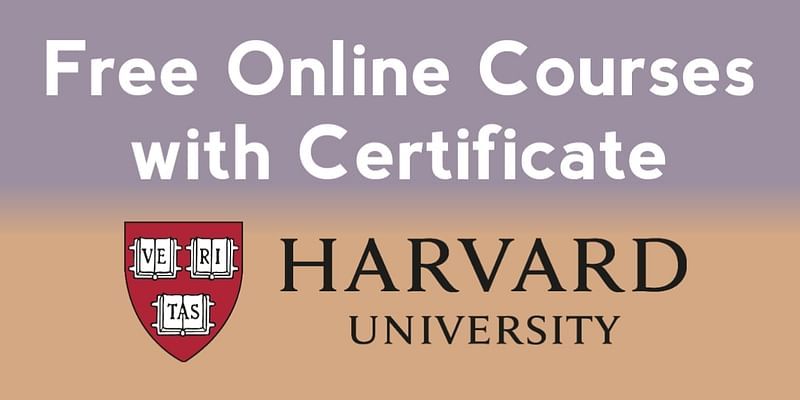The story of Tata: Peter Casey on group’s philanthropy, Ratan Tata vs Cyrus Mistry affair
The Story of Tata: 1868 to 2021 features conversations with Noel Tata, group insiders like N Chandrasekaran, as well as Ratan Tata himself.
The story of the Tata Group is no short of a fairytale.
Founded a century and a half ago, the globally renowned legacy was the birthchild Jamsetji Tata who overcame grave adversities, failure and ill health to build a business empire that mirrors the evolution of India’s bustling economy and helped build the country's national wealth.
However, when the late Cyrus Mistry was dismissed in October 2016 from the post of Chairman at Tata Sons, controversies dogged the conglomerate with the issue dragged to the National Company Law Tribunal—and all the way to the Supreme Court. The debate reached the Twittersphere and many online took sides over the dismissal, questioning Tata Group’s management and throwing a bad light on the business.
This is the subject of Peter Casey’s book, The Story of Tata: 1868 to 2021, first published in August 2021. The latest edition features conversations with Noel Tata, the half-brother of Ratan Tata and Chairman of Trent and Tata Investment Corporation; group insiders like N Chandrasekaran (Chairman, Tata Sons); as well as extensive inputs from Ratan Tata himself.

The book tells Tata’s side of everything that went wrong with the Mistry episode. In telling their version, the book is fairly one-sided. However, it stands out in its offering of a holistic understanding of ethics and values that drive Tata Sons, a global company that is not owned by a single family.
In an age when moving abroad and seeking opportunities overseas inspires countless educated, upwardly mobile Indians to emigrate, Tata’s belief in nation-building while building a sustainable and successful company is worth exploring.
Get up close and personal with India’s biggest banking men and women in Tamal Bandyopadhyay’s new book
Building an empire
Casey does a fine job of capturing the courage and gumption that underlined choices that were made by the Tata men since the Opium Wars of the 19th century. They didn’t just create wealth but built trusts and charities across sectors to support less privileged people with access to education, health, innovation, and even sports.
Anecdotal stories dot the book, like how Jamshetji’s sons—Dorabji and Ratanji Tata—sent an Indian team to compete in the Olympics. This reflects their faith in empowering underprivileged Indians with resources and giving them a fair chance.
The women too rarely took a backseat, actively participating in charities or founding medical research and altruistic ventures. This spirit of giving back was imbibed in Ratan Tata from a very young age by his grandmother, Navajbai Sett. He credits her as, “many, many things that she lived by came from her to my brother, Jimmy and me.”
Casey explains that she had a role in stiffening Tata’s moral spine, which made it easier for him to confront challenges. For instance, as a basic tenet, he believes that the Tatas never offer bribes. However, that may feel a bit stretched listening to lobbyist Niira Radia's tapes of his conversations with him. But none of these accusations stuck to him.
He explains their values in the context of staunch Parsi belief in doing good by doing business, in creating wealth to do better for all.
The idea of doing good beyond chasing a profit-driven bottom line came in the way of some of Mistry’s decisions, which became a bone of contention between him and Tata.
Ratan Tata, the person
This book brings an intimate side of Ratan Tata, the reclusive industrialist and innovator. Interviewing Tata and talking to those that know him well builds the portrait of a dedicated man with a vision beyond wealth creation.
Casey also highlights Tata’s single-minded focus which emerges from childhood experiences with the separation of his parents. His grandmother remained a constant in his life and his vision was honed by time spent in America as a student at Harvard University and Cornell University. America made him independent and ambitious, and also taught him the value of a free economy with equal opportunity for all.
He finds the rampant display of wealth by India’s super-rich distasteful, even if he doesn’t state it in as many words and lives in a simple flat with his dogs.
The book also paints a poignant portrait of a child and young boy who seemed lonelier than most and carried a rather large burden of legacy.
Monsters, manipulation, money: Cursed Bunny's visceral horror is rooted in reality
Highs and lows
His failures, like the Singur Nano plant, and his stubbornness in carrying on with challenging business forays like the JLR (Jaguar Land Rover) purchase find adequate space, along with counter explanations on his decisions to stay the course.
The JLR deal was another major point of conflict with Mistry, as were the jibes around the relative failure of Nano. A similar conflict came up around Corus Steel and overseas acquisitions that were initially hard to turn around. Tata’s focus on engaging with local communities and keeping their interests in mind added to the pressure of conducting day-to-day business. His endeavours like Tata Indica remind the reader of his fortitude.
Casey’s book brings eye-opening details of how Tata dealt with labour issues.
During the 1989 strikes at Telco’s Pune factory when a union leader brought the factory to a standstill and also stoked violence against the employees, Ratan said, “If you put a gun to my head, you better be prepared to pull the trigger, as I will not be moving my head!”
Negotiations finally resolved this crisis. But as he admits, in the case of Mamta Bannerjee and her strike at Singhur against the Nano plant, she decided to pull the trigger. Tatas had to wrap up operations in the state.
Employee welfare remains at the heart of Tata’s companies. Mistry’s decision to shut certain loss-making businesses perhaps tipped the balance against him.
To quote the book, “...Of his [Ratan Tata’s] chief criticisms of Mistry was what Ratan called his mindset of ‘I can’t run this. Sell it. Close it down.’ This, Ratan explained, isn’t what Tata has been about... ‘[We] make a damn good effort to turn them back into profit. See, we’ve always been somewhat closer to national assets...’”.
There was extensive media coverage around Mistry’s dismissal, and the book also offers analyses that point to ‘conflict of interest’ and the fact that he didn’t submit meaningful plans for the company to prepare for the future.
The point of this edition is to highlight Tata’s firm belief and vision for the company’s future. This translates to a society-centred approach, an employee-centred approach, risk-taking, and not sticking to the status quo. It uses case studies to establish these beliefs, connecting the dots to the company’s acquisition of Air India. The firm believes in creating and nurturing national assets, even if they don’t make immediate business sense.
In conclusion, Casey believes that Mistry was not suited to carry forward this holistic vision of philanthropy and business. While other books, like Deepali Gupta’s Tata Vs Mistry: The Battle for India’s Greatest Business Empire, offer objective analysis of this controversy, putting Tata’s greatness and lasting power on a pedestal again and again can get exhausting.
Having said that, this book is a worthwhile read to understand the thinking of a business tycoon and his family that goes beyond ostentatious wealth gathering.
Rating: 3.5/5
Edited by Kanishk Singh











